
Which science geek has not fantasized about walking up a red carpet and receiving a
prestigious medal from royalty?
No, not this
award. Dudes I'm talking about the
real world here!
On Monday, I had a few hours between classes, so I decided to visit the
Nobel exhibition, which is in town for a few months.
This
traveling exhibition commemorates 100 years of the Nobel prize, and has already been to 11 cities around the world, starting with Oslo (Norway) in 2001.
Since it will be featured in only 15 cities globally, I think Singapore is at least
somewhat important to the exhibition organizers. Sigh,
12 out of 15 is still better than none out of 15.
You are thinking, "Man are you obsessed with meaningless
rankings."
Hey, it's not my fault. It's a national pastime ;)
Anyway, Fresh Brainz takes you on a tour of the Nobel exhibition!

Here I am at the entrance. I'm wearing silly grin because admission is free for students.
Nah, it's just because I'm silly.
Upon entry I was pleasantly surprised to be welcomed by a couple of young, enthusiastic museum guides. There weren't many other visitors, so they gave me a personal guided tour.
Oh guys, you shouldn't have! I'm just a rank-less fellow student.
*blushes*
Sadly they declined to be featured on this blog, thus missing their
only shot at fame in the Singaporean science geek
scene. Which currently consists of me and... um... like two other people.
Heh.

This is the deathmask of
Alfred Nobel himself. He died in 1896 at the age of 63 years, which isn't that old by today's standards. I remarked to the guides that the mask revealed that Nobel looked rather young at that time.
Not many wrinkles.
They just continued to hit me about more
important facts.
Fresh Brainz is not
about facts. We only deal in fluff.
Let's start by checking out some newspaper clippings!
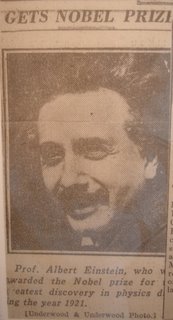
Ah. How can a Nobel exhibition be complete without
Albert Einstein? I'll bet you the last dollar in my wallet that Einstein is the first (and probably the only) name that pops into everyone's head when "Nobel prize" is mentioned.
More about him later!

Of the five Nobel prizes (the
prize for Economics is not really a Nobel prize), the prize for
Peace is one of the most controversial. Originally intended for peace activists, the first statesman to be awarded this prize is US President
Theodore Roosevelt in 1906. Since then many other powerful world leaders have been recommended - even
Adolf Hitler!
Luckily he wasn't awarded the prize.
I think this emphasizes how tough it is to make predictions in the world of politics. Powerful people have the potential both to do a lot of good and a lot of harm. The Peace prize committee is the smallest of the five prize committees, consisting of
only five experts who have to make this difficult decision.

What gives you
greater pride than winning a Nobel prize? Turning it down, why of course!
French philosopher and writer
Jean-Paul Sartre (who once
said "Hell is other people") was awarded the Literature prize in 1964, but he
declined it.
His reasons? He had always refused official honours, and he didn't want to be turned into an "institution".
Sartre, you are one crazy-ass fool for turning away one million Kronors just to laugh at the Establishment.
I LOVE YOU.
*tears welling up*

Now for some artifacts. This is a letter that Einstein wrote in reply to the Nobel Physics committee for awarding him the
1921 Physics prize. Their decision was actually announced in late 1922 when Einstein was away on a trip to Japan. He penned this letter on the return trip to Europe in
early 1923.
That was no internet generation, my friends.

What's the significance of this short letter, you might ask.
Oh, Einstein was off the coast of Singapore when he wrote this letter, hence the words "Nahe Singapore" (English = Near Singapore).
Not like he actually set foot on our island or anything.
Like stamps or money, it's
important details like this that elevate the value of a piece of paper immensely.
*snicker*

And now I will be more serious for two seconds. [serious] This simple bottle of penicillin represents the monumental achievement of
Sir Alexander Fleming, who won the Physiology or Medicine award in 1945 for his work on antibiotics.
In my opinion, his discovery has a greater impact on human health than any other discovery in the 20th century.[/serious]
Was that two seconds? Man you read fast!
To sum up Sir Fleming's effort, a wise professor once said, "The use of antibiotics has reduced childhood mortality so effectively that we can
all look forward to a long, slow death from neurodegenerative diseases."

Look! A Cornell University dinner plate. A memento that symbolizes the playful spirit of physicist and all-round nice uncle
Richard Feynman who won the Physics prize in 1965. You can read about the significance of the plate
here.
Feynman once
said:
... I thought to myself, I haven’t done anything important and I’m never going to do anything important. But I used to enjoy physics and mathematical things and because I used to play with them it was very short order (that I) worked the things out for which I later won the Nobel Prize.Well, I'm playful too...
*starts fantasizing again*
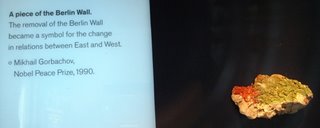
As I mentioned earlier, the Nobel Peace prize is often disputed. However,
Mikhail Gorbachev, the leader of the Soviet Union during the "
glasnost" years, is commonly accepted as
the architect of peace who finally ended the Cold War. I believe he truly deserves his 1990 Peace prize.
I put this photo up because I remember Gorbachev, the birthmark on his forehead, and the fall of the Berlin Wall as a kid.
I am that old.
No actually I put this up because at that time everyone spelt his name as Gorbachev, although they pronounced it as Gorbachov. Now they finally spell it Gorbachov!
I know you don't care.

This year's winners for Physiology or Medicine are
Andrew Fire and
Craig Mello. They discovered a process called
RNA interference (RNAi), which is a method that cells use to fend off invasion from viruses. Their discovery allows scientists to use the same mechanism to turn off specific genes.
A useful experimental and future therapeutic tool.
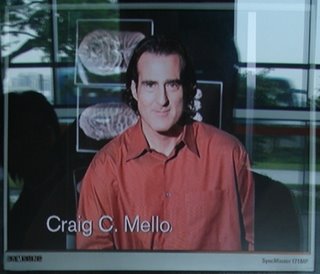
RNAi works to a different extent in different species of life. In worms it is especially effective and permanent, whereas in mammals it is more variable and temporary. Even so, it is quicker and much more convenient to turn off genes by RNAi than by traditional methods like homologous recombination.
You can learn more about RNAi from this
video, produced by Nature magazine.
And finally - the
JUICY part of the exhibition!

Imagine
YOU won the Nobel prize for Physiology or Medicine. What will you actually receive?
OK, stop drooling and pay attention.
You will get one of these fine Swedish-designed
medals (Peace prize medals were designed in Norway) which is made of solid 18K gold, plated with 24K gold for that added shine.
On the obverse side you will see uncle Nobel's face.
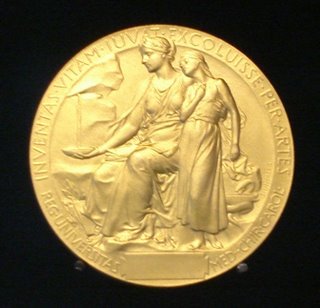
On the reverse side you will see this. Notice that little blank section at the bottom of the medal?
Yes, my friend. That's where YOUR name be engraved.
You are one lucky, lucky, smart dude.

Your medal will be presented to you (by the King of Sweden, no less) in this fine medal box emblazoned with your name.

You will also receive a diploma just like this one, presented to
Erwin Schrodinger, one of the founders of quantum mechanics, in 1933.
Whoop-de-doo.
Which reminds me - since the Nobel prize cannot be given out post-humously,
Schrodinger's Cat cannot receive it because we cannot tell if it's dead or alive without opening the box.
That was
so insider.

Just a few more things to mention. Here are the photos of 16 aunties who won various Nobel prizes. Out of the
768 individual laureates to date, only
33 are women.
Of course as more women enter science, literature and politics, this number is set to go up. Soon I will be able to write more stories of Nobel auntie lectures, in addition to
Nobel uncle lectures.

To showcase all of the Nobel prize winners to visitors, the exhibitors have constructed this bizarre-looking device that "parades" the banners of every single winner on curved rails, two banners at a time. It takes more than 5 hours to complete one whole cycle.
It's strange to see pictures of people moving around in a cold, metallic contraption that makes lots of clicks and clattering noises.
In fact it's rather eerie.
I found the
Francois Jacob's banner slotted somewhere in there, but I was too impatient to wait for it to come out for a photo opportunity.

Just as I was about to leave the exhibition, I noticed this on the information counter.
Oooh...
CHOCOLATE!!! NOBEL!!!That is so wrong.
Which is why I bought ten. I gave nine of these to my fellow lab members.
I shared the remaining chocolate Nobel with my family; it's made of
dark chocolate and is quite good actually.
So... if you are in Singapore, why not pop by the exhibition and pick up a handful of Nobel prizes to enjoy after lunch?
XD
Would you like to know more?
- about the Nobel prize
- about the Nobel Museum
- about other previous exhibitions
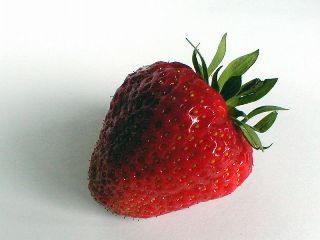 Jake Shimabukuro playing George Harrison's "While My Guitar Gently Weeps" on a ukelele.
Jake Shimabukuro playing George Harrison's "While My Guitar Gently Weeps" on a ukelele. Jake Shimabukuro playing George Harrison's "While My Guitar Gently Weeps" on a ukelele.
Jake Shimabukuro playing George Harrison's "While My Guitar Gently Weeps" on a ukelele.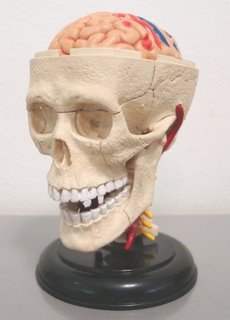 I still remember the smell of the medicated oil and the whirring sound of the generator.
I still remember the smell of the medicated oil and the whirring sound of the generator. We have two vending machines in our institute, one dispenses cold drinks, and the other dispenses snacks such as potato chips and cup noodles.
We have two vending machines in our institute, one dispenses cold drinks, and the other dispenses snacks such as potato chips and cup noodles.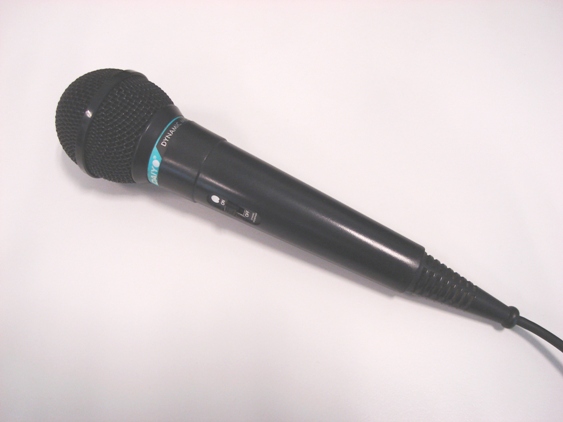 I just recovered from a serious bout of food poisoning. Body aches and diarrhoea for a few days.
I just recovered from a serious bout of food poisoning. Body aches and diarrhoea for a few days. If you ever had the misfortune of sitting next to a bunch of biogeeks in the cafeteria during lunch, you might overhear such frightening terms like "cloning" and "transformation" casually thrown about like nobody's business.
If you ever had the misfortune of sitting next to a bunch of biogeeks in the cafeteria during lunch, you might overhear such frightening terms like "cloning" and "transformation" casually thrown about like nobody's business. Which science geek has not fantasized about walking up a red carpet and receiving a prestigious medal from royalty?
Which science geek has not fantasized about walking up a red carpet and receiving a prestigious medal from royalty?




















 A long, long time ago, scientists were called "natural philosophers" and squatted together with inventors, artists, political activists and other crackpot dreamers at the fringes of society.
A long, long time ago, scientists were called "natural philosophers" and squatted together with inventors, artists, political activists and other crackpot dreamers at the fringes of society.
 Hi Fresh Brainz fanz! Thank you for your submissions on the hottest real scientists and engineers ever. We didn't receive much stuff about hunks, so we will be focusing on the hot babes instead.
Hi Fresh Brainz fanz! Thank you for your submissions on the hottest real scientists and engineers ever. We didn't receive much stuff about hunks, so we will be focusing on the hot babes instead.




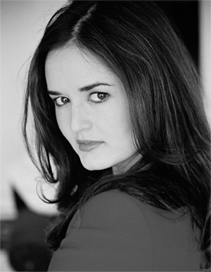



 One day, a professor was teaching introductory genetics to a bunch of first-year undergrads.
One day, a professor was teaching introductory genetics to a bunch of first-year undergrads.

